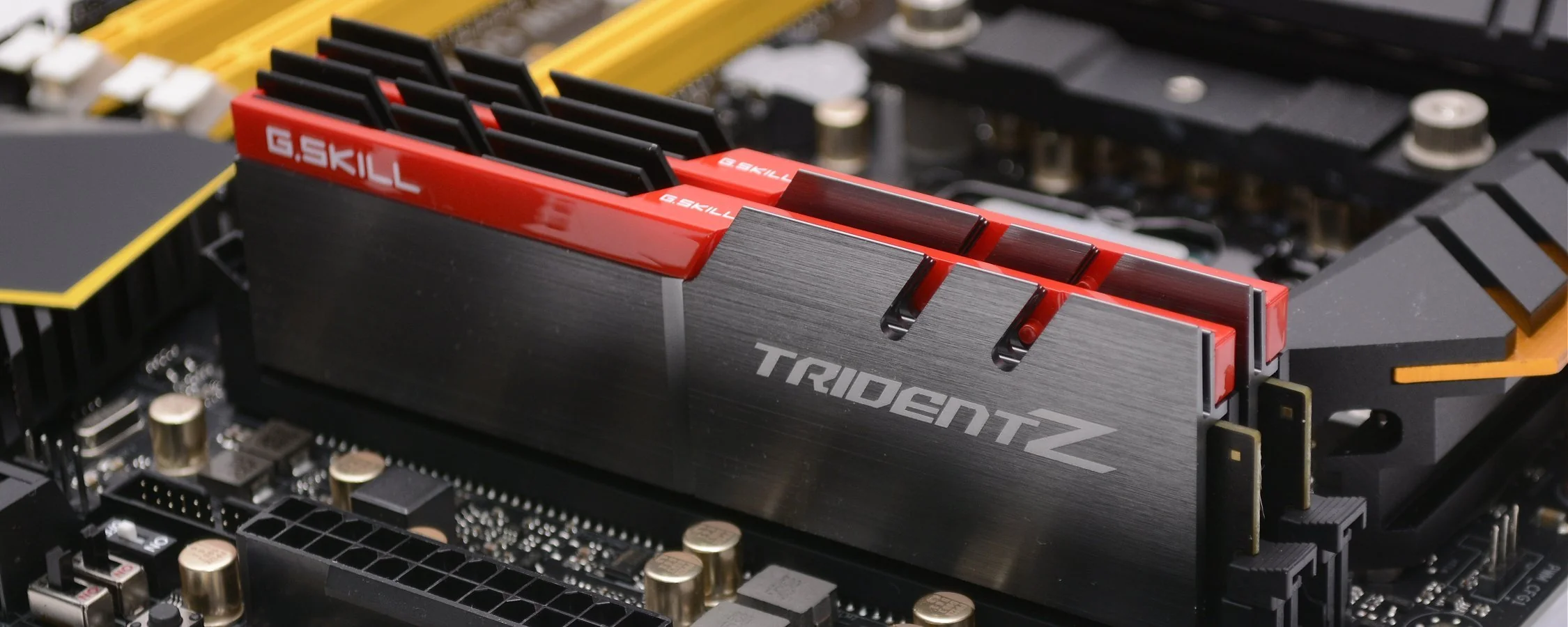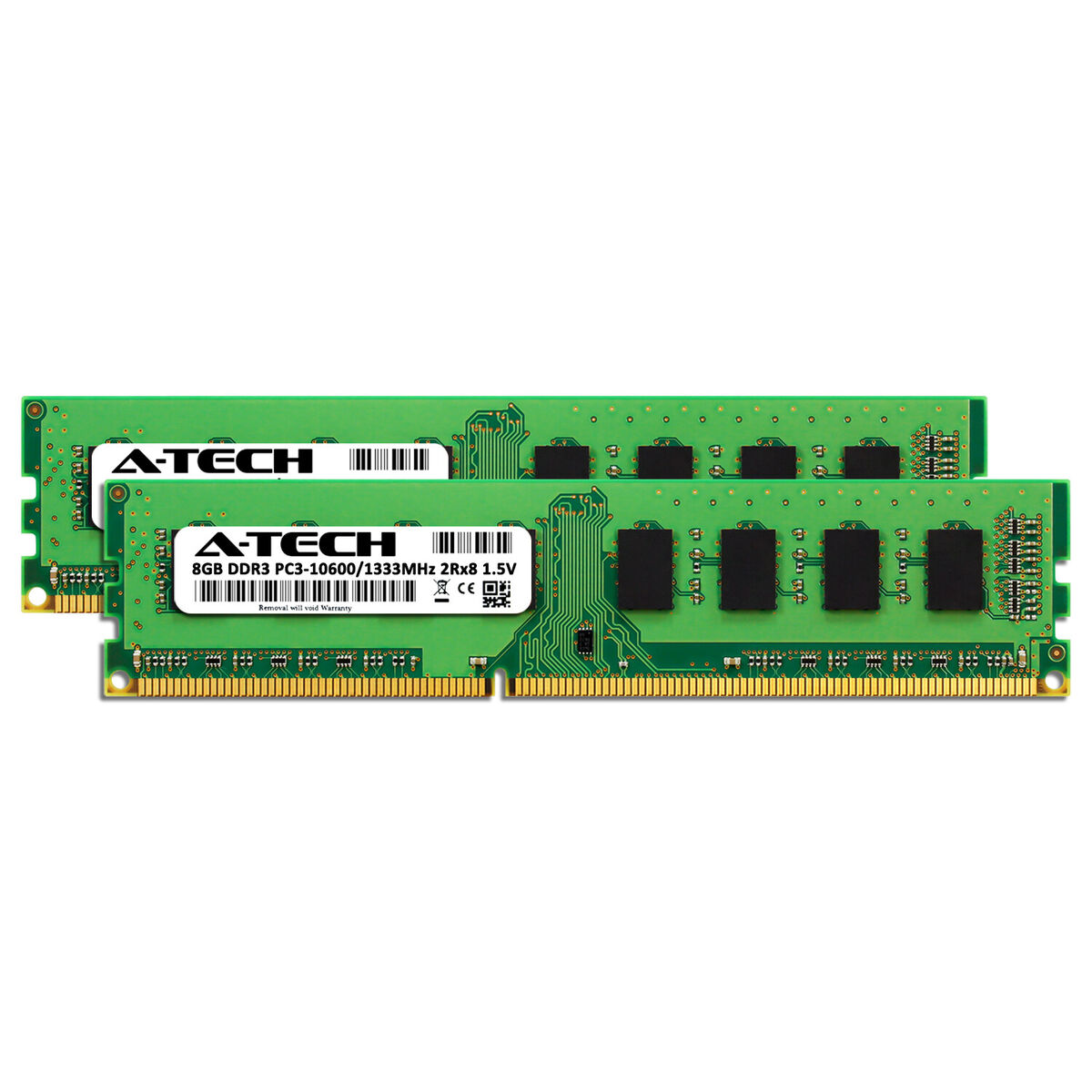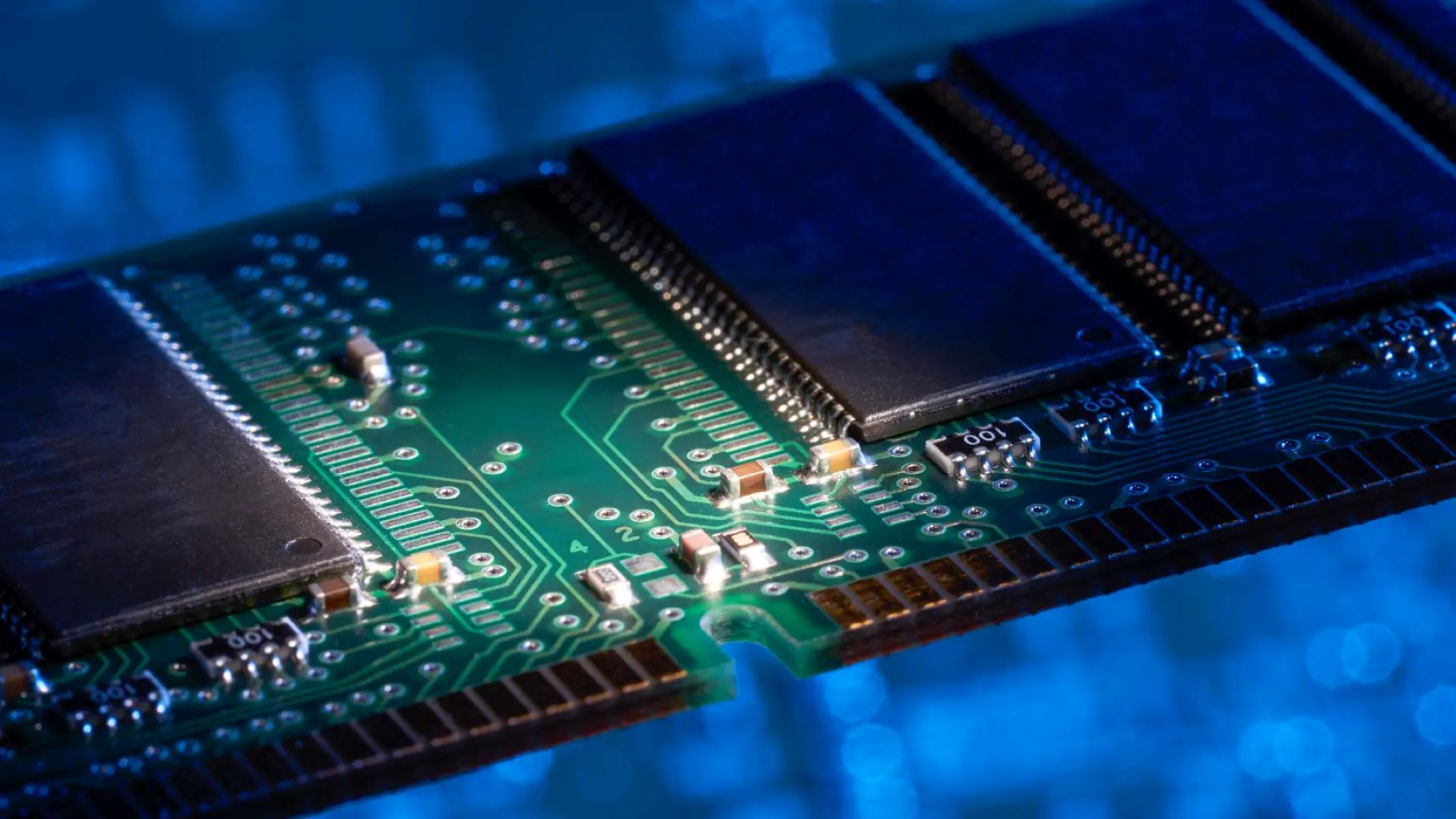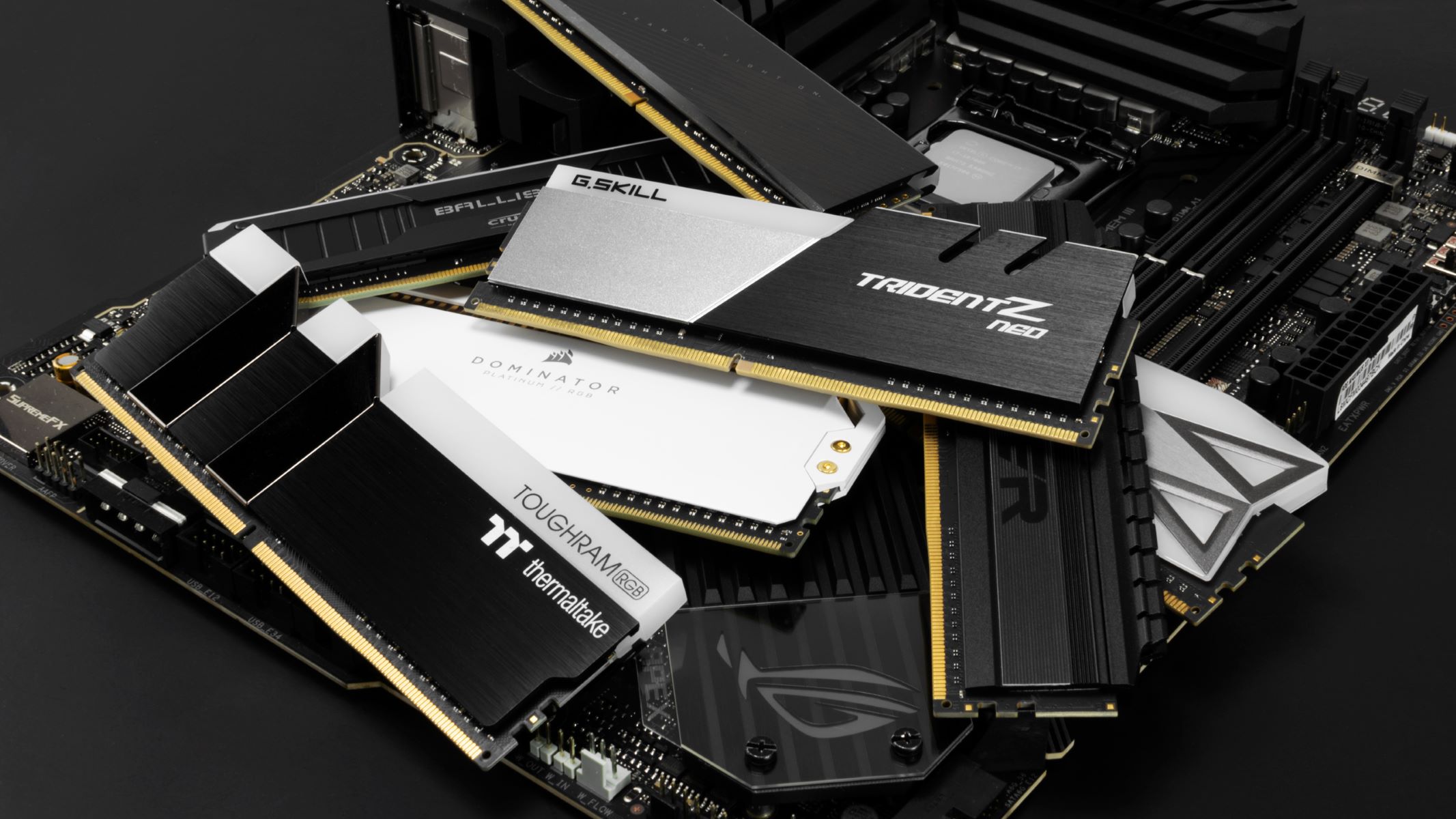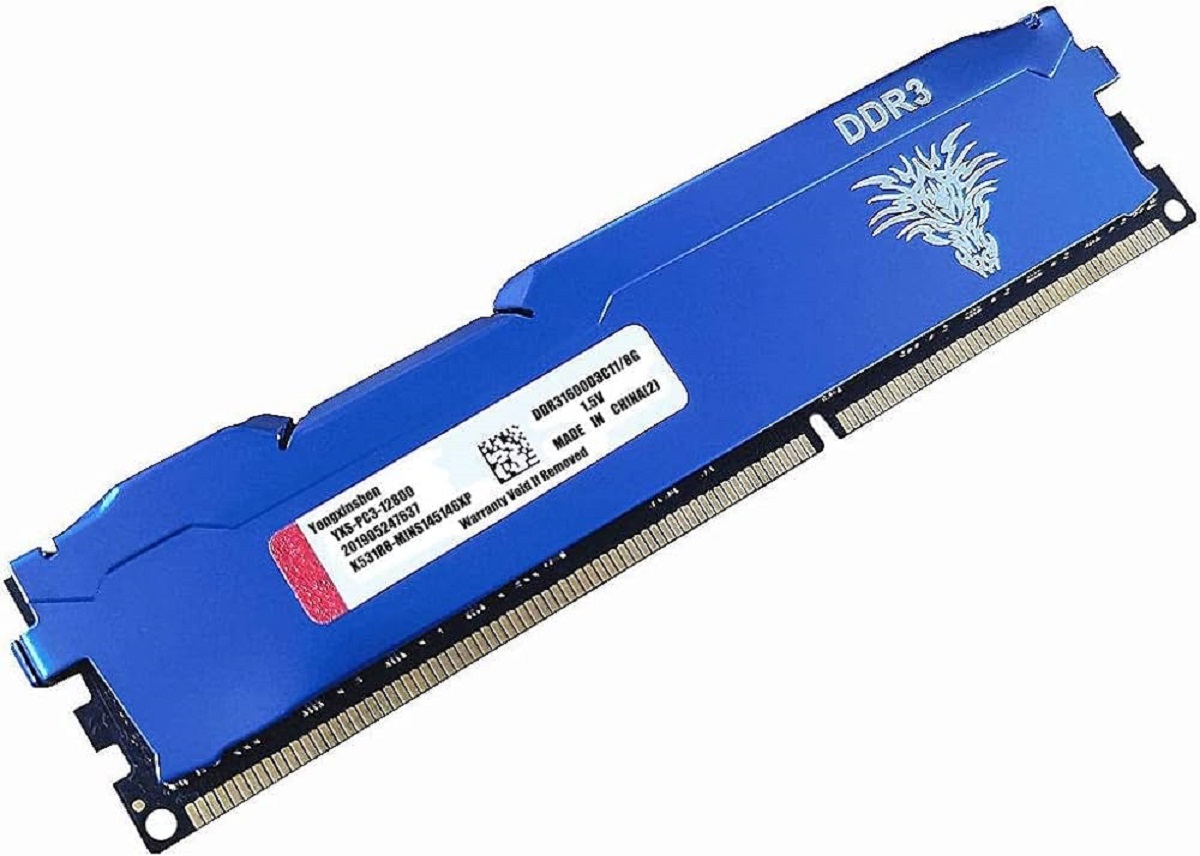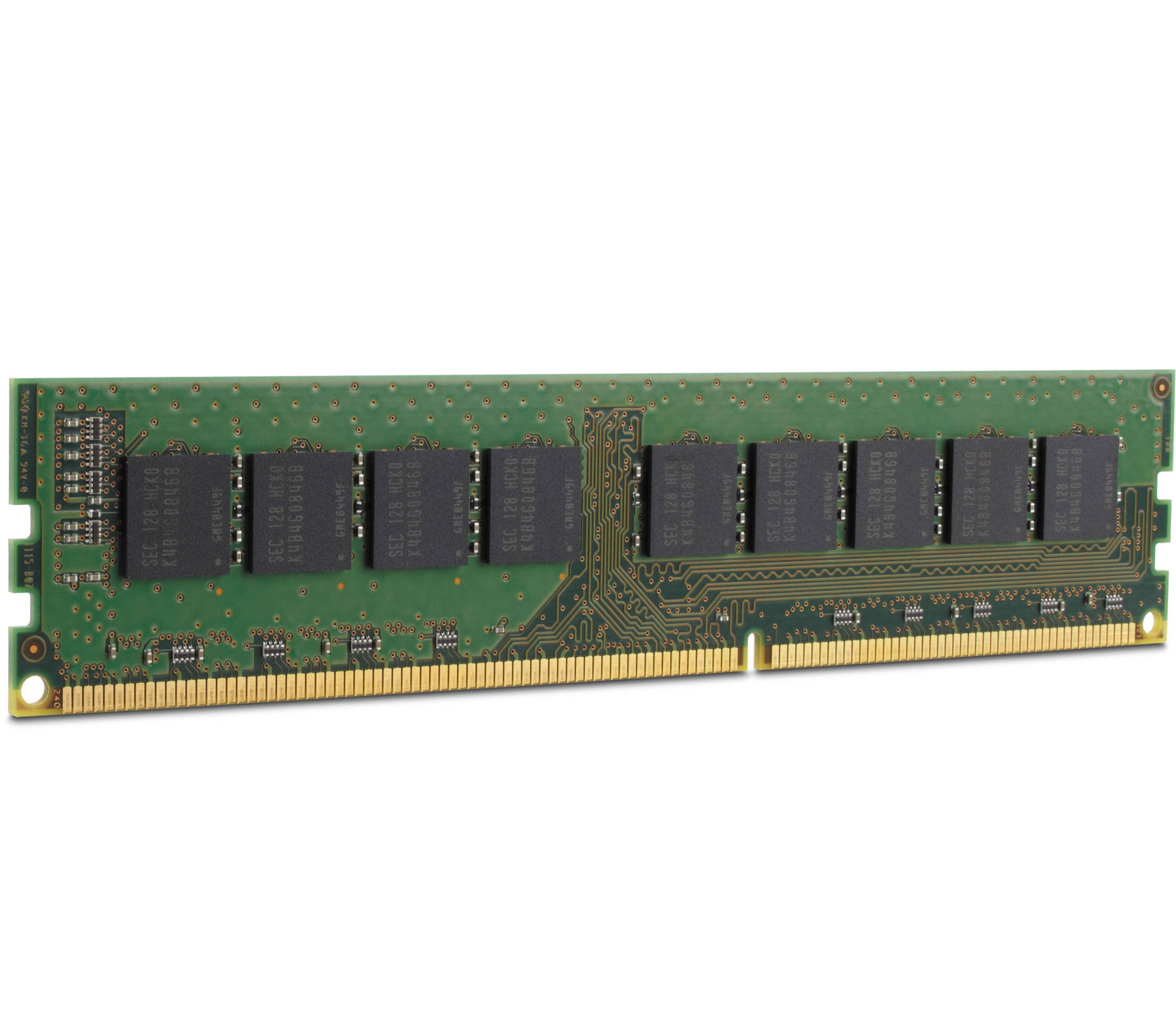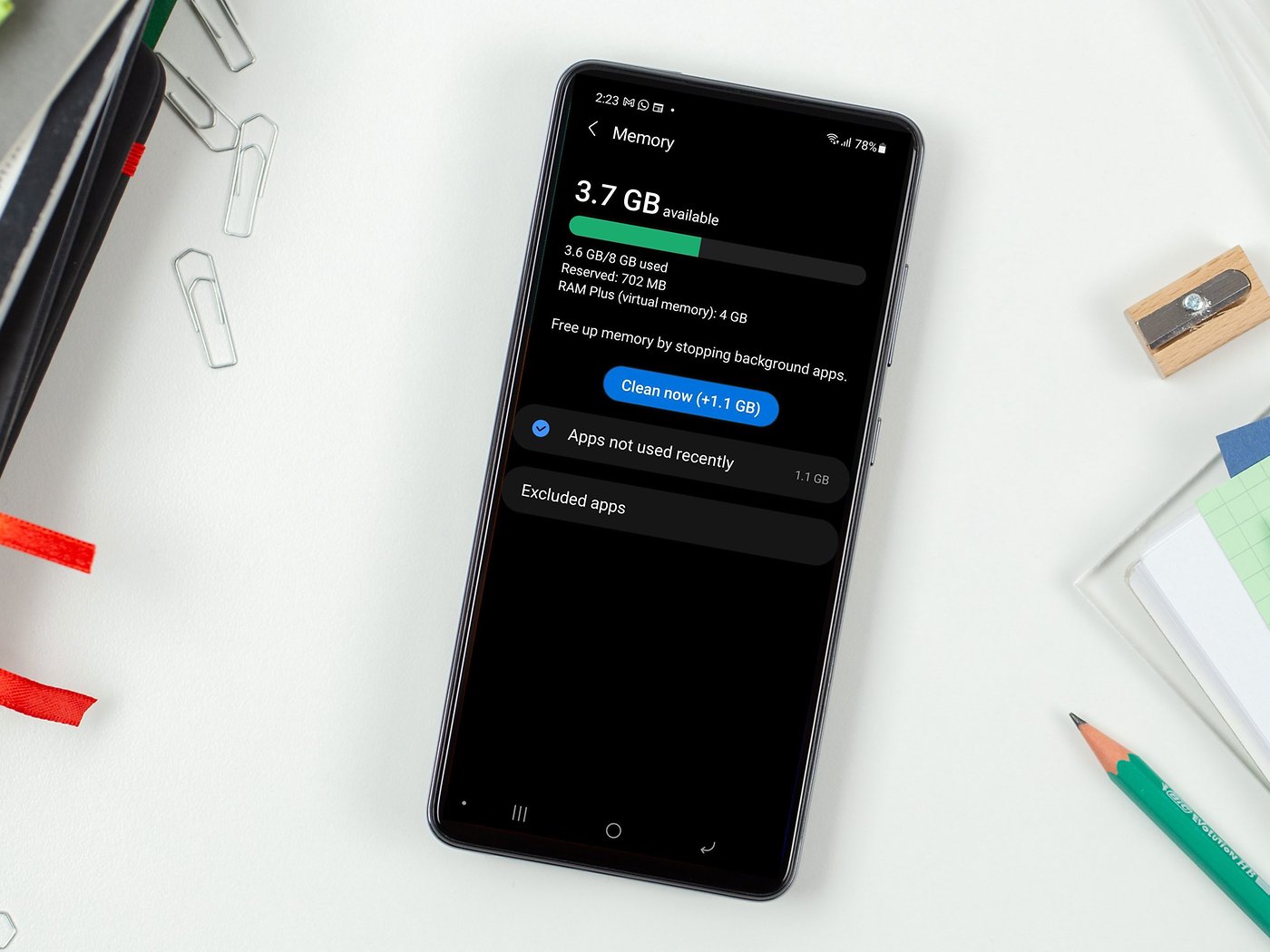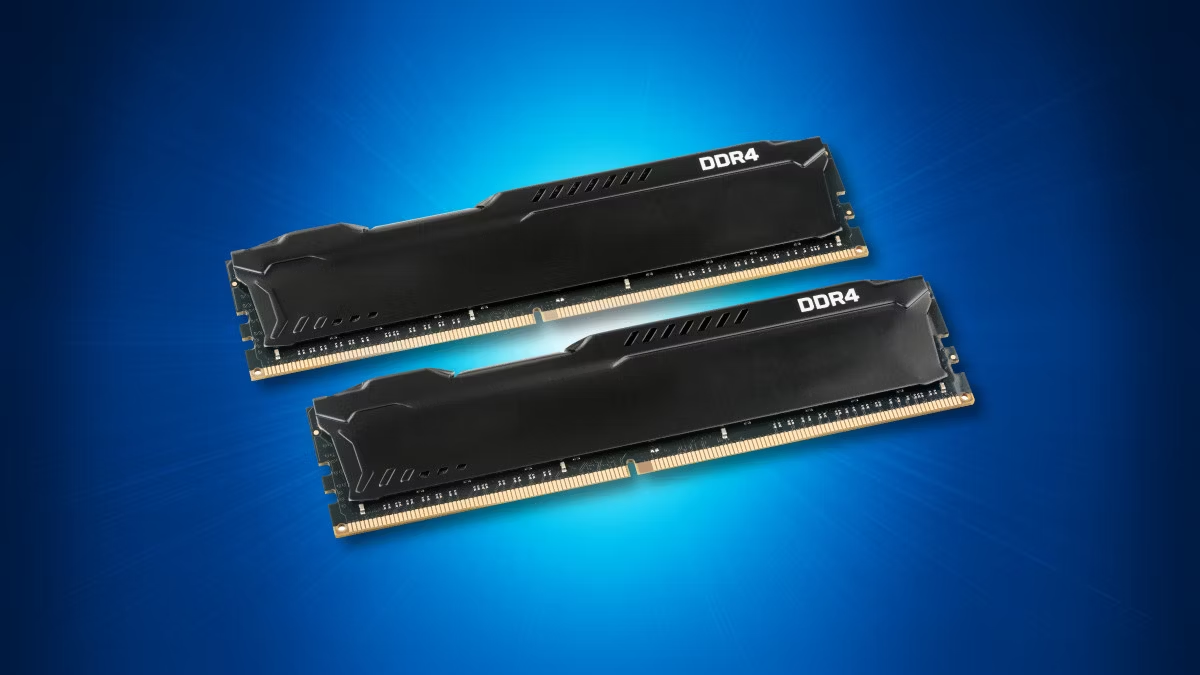Introduction
Welcome to the world of RAM, an essential component that affects the performance of your computer or device. RAM, short for Random Access Memory, plays a critical role in how smoothly your system operates. Whether you’re browsing the web, streaming videos, gaming, or running multiple software applications, the amount and quality of RAM you have can significantly impact your overall experience.
At its core, RAM is a form of memory designed to provide temporary storage for data that your device needs to access quickly. It acts as a bridge between the processor and the storage drive, allowing for seamless and speedy data retrieval. When you launch an application or open a file, it gets loaded into the RAM, allowing the processor to access it swiftly. Without sufficient RAM, your device may struggle to handle multiple tasks simultaneously, resulting in sluggish performance and frustrating delays.
Now, you might be wondering how exactly RAM affects the performance of your computer or device. In the following sections, we will delve into the various ways RAM influences speed, multitasking capabilities, and even gaming performance. We will also discuss how you can optimize your RAM usage and determine how much RAM you need for your specific workflow. So, let’s dive in and explore the fascinating world of RAM and its impact on your system’s performance.
What is RAM?
RAM, which stands for Random Access Memory, is a crucial component of any computing device. It is a type of computer memory that provides temporary storage and quick access to data that is actively being used by the processor. Unlike a hard drive or solid-state drive (SSD), RAM is volatile, meaning it loses all data stored in it when the device is powered off or restarted.
RAM is composed of integrated circuits that contain millions of memory cells. These cells are capable of storing binary data in the form of bits (0s and 1s). Each memory cell has its unique address, allowing the processor to retrieve data directly without the need to search through vast storage spaces.
One of the key features of RAM is its random access ability, which enables the processor to retrieve data in any order, regardless of its location. This allows for quick and efficient data access, essential for running applications and executing tasks without unnecessary delays.
RAM comes in various types, including DDR3, DDR4, and LPDDR4, with each generation offering increased speed and improved performance. The amount of RAM installed in a device, often measured in gigabytes (GB), determines how much data it can store and access simultaneously.
While the processor’s speed plays a vital role in overall system performance, the availability and quality of RAM also greatly impact the speed and efficiency of your device. Adequate RAM ensures that your computer or device can handle multiple tasks and applications simultaneously, without slowing down or experiencing freezing issues.
In the following sections, we will explore in detail the ways in which RAM affects the performance of your computer or device. From speeding up data retrieval to enhancing multitasking capabilities, RAM plays a pivotal role in optimizing your computing experience.
How Does RAM Affect Performance?
RAM plays a critical role in determining the overall performance and speed of your computer or device. The amount and quality of RAM directly impact how efficiently your system runs various applications and processes. Let’s explore some of the ways that RAM affects performance:
1. Speeding up data retrieval: When you open an application or launch a file, it gets loaded into the RAM for quick access by the processor. The more RAM you have, the more data your device can store in it, reducing the time it takes for the processor to retrieve and process the data. This results in faster response times and smoother multitasking capabilities.
2. Enhancing multitasking capabilities: RAM allows your computer or device to handle multiple tasks simultaneously. When you have more RAM, your system can store and manage data from different applications without slowing down or experiencing performance bottlenecks. This is particularly important if you often work with resource-intensive software or perform demanding tasks, such as graphic design, video editing, or running virtual machines.
3. Improving overall system responsiveness: Insufficient RAM can lead to laggy and unresponsive systems. When your device runs out of available RAM, it relies on virtual memory, which uses a portion of the hard drive or SSD as temporary storage. However, virtual memory is much slower than physical RAM, causing delays in data retrieval and processing. By having an ample amount of RAM, you can ensure that your device operates smoothly and responds quickly to your commands.
4. Reducing the need for frequent disk access: Having enough RAM reduces the need for your device to access the storage drive frequently. Since RAM is faster than a hard drive or SSD, it allows for quicker data retrieval, minimizing the time it takes for applications to load, files to save, and system operations to complete. This not only enhances performance but also extends the lifespan of your storage drive by reducing unnecessary read and write operations.
Overall, RAM plays a vital role in determining the speed, responsiveness, and multitasking capabilities of your computer or device. By ensuring that you have sufficient RAM for your specific needs, you can optimize performance and elevate your computing experience to new heights.
The Impact of RAM on Speed
RAM has a significant impact on the speed and performance of your computer or device. The amount and quality of RAM directly influence how quickly your system can access and process data. Let’s explore how RAM affects speed:
1. Faster data retrieval: The more RAM you have, the more data your device can store and access quickly. When your computer needs to retrieve data, it can access it directly from the RAM, which is much faster than accessing it from a storage drive. This results in faster application load times, quicker file transfers, and smoother overall system performance.
2. Reduced reliance on virtual memory: Insufficient RAM can lead to your device relying heavily on virtual memory, which uses a portion of your storage drive to compensate for the lack of available RAM. Virtual memory is significantly slower than physical RAM, causing your system to slow down when it needs to access data from the storage drive. By having enough RAM, you can reduce the reliance on virtual memory, resulting in a faster and more responsive system.
3. Improved multitasking capabilities: RAM enables your device to handle multiple tasks simultaneously. With more RAM, your computer can store and manage data from different applications without slowing down. This means you can have multiple programs open, switch between them seamlessly, and work on resource-intensive tasks without experiencing lags or delays.
4. Enhanced gaming performance: For gamers, having sufficient RAM is crucial for a smooth gaming experience. Games today often require a significant amount of RAM to store and load game assets, textures, and other data. Insufficient RAM can lead to frame rate drops, game freezes, and longer loading times. By having enough RAM, you can ensure smoother gameplay, quicker load times, and an overall more enjoyable gaming experience.
5. Speeding up system operations: Many system operations, such as booting up your computer, launching applications, and performing updates, heavily rely on RAM. Adequate RAM allows these operations to be carried out swiftly, reducing the waiting time and enhancing the overall speed of your system.
Overall, RAM has a significant impact on the speed and performance of your computer or device. By ensuring that you have enough RAM for your specific needs, you can experience faster data retrieval, improved multitasking capabilities, enhanced gaming performance, and overall quicker system operations.
RAM and Multitasking
RAM plays a crucial role in enabling multitasking capabilities on your computer or device. It allows you to run multiple applications and perform various tasks simultaneously without experiencing significant performance issues. Let’s explore how RAM influences multitasking:
1. Handling multiple applications: When you have sufficient RAM, your computer can store and manage data from different applications that are active at the same time. This means you can have a web browser, a word processor, a music player, and other software running concurrently, all without experiencing significant slowdowns or lags. With adequate RAM, the system can quickly switch between applications and allocate resources efficiently, ensuring a smooth and seamless multitasking experience.
2. Avoiding performance bottlenecks: Insufficient RAM can lead to performance bottlenecks when you have several resource-intensive applications running simultaneously. When the available RAM gets depleted, the operating system starts using virtual memory, which is much slower. This can result in delays, as the system needs to transfer data between RAM and virtual memory frequently. Having more RAM helps avoid these bottlenecks, ensuring that all running applications have the resources they need to operate smoothly.
3. Running background processes: RAM is also essential for running background processes and services on your computer. These processes, such as antivirus scans, system updates, and file backups, work silently in the background, ensuring the security and stability of your system. With adequate RAM, these processes can run alongside your active applications without negatively impacting their performance.
4. Virtualization and running virtual machines: Virtualization technology allows you to run multiple virtual machines on a single physical computer. Each virtual machine needs its dedicated portion of RAM to run efficiently. With ample RAM, you can allocate sufficient memory to each virtual machine, enabling them to function smoothly without impacting the performance of other running applications.
5. Switching between tasks seamlessly: RAM facilitates quick data retrieval and storage, allowing for seamless task switching. When you switch between applications or tasks, the system can quickly load the necessary data from RAM, reducing any waiting time or delays. This enables a smooth transition between tasks, enhancing productivity and user experience.
Having enough RAM is essential for efficient multitasking. It allows you to run multiple applications, handle background processes, switch between tasks seamlessly, and avoid performance bottlenecks. By ensuring that you have sufficient RAM for your specific multitasking needs, you can enhance productivity and make the most out of your computing experience.
RAM and Gaming Performance
RAM plays a vital role in determining the gaming performance and experience on your computer. With the increasing demands of modern games, having sufficient RAM is crucial for optimal gameplay. Let’s explore how RAM influences gaming performance:
1. Faster game loading times: When you launch a game, the data, including game assets, textures, and other resources, needs to be loaded into RAM for quick access by the system. With more RAM available, the game can load these assets faster, resulting in reduced loading times before you can start playing.
2. Smoother gameplay: Games often require a significant amount of memory to store and process data in real-time. Insufficient RAM can lead to frame rate drops, game freezes, and overall choppy gameplay. With ample RAM, the game can store and access the necessary data smoothly, ensuring a seamless and immersive gaming experience.
3. More complex and detailed game environments: RAM enables games to render more complex and detailed environments. It allows for the quick loading and display of high-resolution textures, intricate character models, and realistic physics simulations. With more RAM available, games can push the boundaries of visual quality, creating stunning and immersive gaming worlds.
4. Efficient multitasking during gaming: Gamers often engage in various activities while playing, such as live streaming, voice chatting, or running game capture software. These tasks require additional system resources, including RAM. Having sufficient RAM ensures that you can multitask seamlessly while gaming, without experiencing performance drops or interruptions.
5. Future-proofing your gaming rig: Games are becoming more demanding with each passing year. By investing in ample RAM, you can future-proof your gaming rig, ensuring it can handle upcoming games that may require more memory. This means you won’t have to upgrade your RAM frequently as game demands increase, saving you money and hassle in the long run.
It is important to note that while RAM is an essential factor in gaming performance, it is not the only determinant. The graphics card, CPU, and storage drive also play significant roles. However, having sufficient RAM is crucial for ensuring smooth gameplay, faster loading times, and a more immersive gaming experience.
When choosing RAM for gaming, consider the requirements of the games you play, as well as any other software you may run simultaneously. By ensuring that you have enough RAM for your gaming needs, you can maximize performance and fully enjoy the excitement and beauty of modern gaming worlds.
Optimizing RAM Usage
Optimizing RAM usage is essential for maximizing the performance of your computer or device. By employing certain strategies, you can ensure efficient utilization of available RAM and enhance overall system performance. Let’s explore some tips for optimizing RAM usage:
1. Close unnecessary applications: Running multiple applications simultaneously can consume a significant amount of RAM. To free up valuable memory, close any unnecessary programs or background processes that are not currently in use. This will help allocate more RAM to the applications you actively need, improving their performance.
2. Manage startup programs: Some applications launch automatically when you start your computer, running in the background and using up valuable system resources. Review your startup programs and disable any unnecessary ones. This will prevent them from using RAM during startup, allowing more memory to be available for other tasks.
3. Use a lightweight antivirus program: Antivirus software is essential for protecting your system, but certain programs can be resource-intensive and use up a considerable amount of RAM. Consider using a lightweight antivirus program that offers adequate protection without consuming excessive system resources.
4. Optimize browser tabs and extensions: Web browsers, especially when filled with numerous open tabs and extensions, can consume a significant amount of RAM. Limit the number of open tabs and remove unnecessary extensions to free up memory for other applications. Consider using tab suspender extensions that unload inactive tabs, reducing RAM usage without losing their content.
5. Adjust virtual memory settings: Virtual memory, which uses a portion of your hard drive or SSD as temporary memory storage, can help compensate for insufficient physical RAM. However, incorrect virtual memory settings can negatively impact performance. Adjust the virtual memory settings to ensure it is optimally configured and that the system can efficiently manage memory allocation between RAM and virtual memory.
6. Keep your system updated: Regularly updating your operating system and software can help optimize memory management. Updates often include performance improvements and bug fixes, ensuring that your system is utilizing RAM efficiently. Additionally, updating device drivers can help resolve memory-related issues and enhance overall system performance.
7. Consider upgrading your RAM: If you frequently find your system running out of available RAM or struggling to handle resource-intensive tasks, upgrading your RAM may be a worthwhile investment. Increasing the amount of RAM can provide a significant boost in performance, enabling your system to handle more demanding applications and multitasking scenarios.
By implementing these optimization strategies, you can ensure that your computer or device utilizes its available RAM efficiently. This will result in improved system performance, faster response times, and enhanced multitasking capabilities.
How Much RAM Do You Need?
Determining how much RAM you need for your computer or device depends on your specific requirements and usage patterns. The amount of RAM you need can vary depending on factors such as the operating system, types of applications you use, and the tasks you perform. Here are some considerations to help you determine the ideal amount of RAM for your needs:
1. Basic tasks and web browsing: For casual web browsing, email, and basic productivity tasks, such as word processing and spreadsheet editing, 4GB to 8GB of RAM is generally sufficient. This amount of RAM enables smooth web browsing and multitasking with lightweight applications.
2. Multitasking and productivity: If you frequently use resource-intensive applications, such as photo or video editing software, or if you often have multiple applications running simultaneously, consider upgrading to 8GB to 16GB of RAM. This will provide ample memory for multitasking and ensure smooth performance even with demanding applications.
3. Gaming: Gamers typically require more RAM to meet the demands of modern games. The recommended RAM for gaming is typically between 16GB and 32GB, depending on the complexity and requirements of the games you play. Games with larger environments, high-resolution textures, and detailed graphics tend to benefit from more RAM.
4. Content creation and professional work: Professionals working with resource-intensive applications like video editing, 3D modeling, and graphic design will benefit from having 32GB or more of RAM. These applications require substantial memory to handle large files and complex operations. The extra RAM ensures smooth performance, faster rendering times, and less potential for system slowdowns.
5. Virtualization and server hosting: If you plan to run virtual machines or host servers on your computer, you will need a considerable amount of RAM. Aim for 32GB or more to allocate sufficient memory to each virtual machine or server instance, allowing them to run smoothly without impacting each other or the host system’s performance.
6. Future-proofing: As software and applications continue to evolve and demand more resources, it is wise to consider future-proofing your system. If you plan to keep your computer for several years without frequent upgrades, investing in additional RAM beyond your current needs can ensure that your system remains capable of handling new and demanding software in the future.
Ultimately, the ideal amount of RAM for your needs depends on your specific usage requirements and budget. It is important to strike a balance between having sufficient RAM for your current needs and future-proofing your system to some extent. Consider the types of applications you use, the tasks you perform, and any potential future requirements when determining the appropriate amount of RAM for your computer or device.
Upgrading Your RAM
If you find that your computer is struggling to handle your tasks and applications efficiently, upgrading your RAM can be an effective solution. Adding more RAM to your system can provide a significant performance boost and enhance multitasking capabilities. Here are the steps to consider when upgrading your RAM:
1. Check your system specifications: Before purchasing new RAM modules, review your computer’s specifications to determine the type and maximum capacity of RAM supported by your system. Check the documentation or manufacturer’s website for this information.
2. Determine the amount of RAM to add: Assess your needs and usage patterns to determine how much additional RAM would be beneficial. Consider the types of applications you use and the tasks you perform. If unsure, consult online resources or seek advice from professionals.
3. Choose the right RAM modules: Once you know the type and amount of RAM you need, choose the appropriate RAM modules. Pay attention to factors such as compatibility, speed, and capacity. Match the specifications of the existing RAM modules if you plan to add RAM in parallel. If replacing existing RAM, ensure the new modules are compatible with your system.
4. Power off and prepare your computer: Before installing new RAM, power off your computer and unplug it from the power source. Take necessary precautions to prevent static electricity discharge by grounding yourself. Open the computer case or access the RAM slots according to your system’s design.
5. Remove existing RAM (if applicable): If you are replacing existing RAM modules, gently release the retention clips on each side of the module. Carefully slide the RAM module out of its slot while applying equal pressure on both ends. Store the RAM module properly in an antistatic bag.
6. Install the new RAM modules: Line up the notch(es) on the new RAM module with the slot(s) on the motherboard. Insert the module at an angle and press it down, applying even pressure on both ends until the retention clips snap into place. Ensure a secure installation without forcing the module.
7. Power on your computer: With the new RAM installed, close the computer case and reconnect any cables that were disconnected. Plug the computer back into the power source. Power on your computer and check if the system recognizes the new RAM. The BIOS or operating system should display the new RAM capacity.
8. Test and verify: After upgrading the RAM, run your normal applications and tasks to assess the improvement in performance. Monitor task manager or system monitoring software to ensure that the new RAM is recognized and utilized properly. If any issues arise, double-check the installation and consult support resources if necessary.
9. Consider professional assistance: If you are unsure about installing RAM yourself or if your computer has complex hardware, consider seeking assistance from a professional technician. They can ensure proper installation and handle any potential complications.
Upgrading your RAM can breathe new life into your computer, enhancing its performance and allowing for smoother multitasking experiences. By following these steps, you can successfully upgrade your RAM and enjoy the benefits of improved system responsiveness and efficiency.
Conclusion
RAM, or Random Access Memory, is a crucial component that significantly impacts the performance of your computer or device. It plays a vital role in speeding up data retrieval, enhancing multitasking capabilities, and improving overall system responsiveness. By understanding the importance of RAM and implementing strategies to optimize its usage, you can maximize the efficiency of your system.
When determining how much RAM you need, consider your specific requirements and usage patterns. The ideal amount varies depending on factors such as the types of applications you use and the tasks you perform. Whether you are engaged in basic web browsing, heavy multitasking, content creation, or gaming, having sufficient RAM is essential.
Upgrading your RAM can provide a significant performance boost, allowing your system to handle more demanding tasks and applications. By following the steps to upgrade your RAM, you can ensure a smooth installation process and enjoy the benefits of improved system responsiveness and multitasking capabilities.
Remember to check your system specifications, choose the right RAM modules, and properly install them. It is also vital to optimize your RAM usage by closing unnecessary applications, managing startup programs, and adjusting virtual memory settings if necessary. Regularly updating your system and considering future needs can also help optimize RAM utilization and enhance performance.
With the right amount and quality of RAM, you can experience faster data retrieval, smoother multitasking, improved gaming performance, and overall system speed. By establishing a balance between RAM capacity and your specific usage requirements, you can optimize your computing experience and enjoy efficient and enjoyable performance.
So, take the necessary steps to ensure you have the right amount of RAM for your needs, optimize its usage, and upgrade when necessary. By doing so, you will unlock the full potential of your computer or device and enhance your productivity and enjoyment in the digital world.







